Shuyi Cao and the Poetics of Perpetual Transformation
By Constance AyrtonIn Shuyi Cao’s world, nothing remains as it was. Driftwood roots twist and metamorphose, transforming gradually – through shells, fish bones, glass – until they arrive, almost imperceptibly, at plastic. Branches spring outward, alien leaves unfurling to reveal tiny, intricate worlds within. The landscape Cao conjures is one governed entirely by transformation, by the perpetual life cycles of materials. It is a world of becoming, in which the act of change itself reveals the true essence of existence: that we, like everything else, are caught in an endless state of flux.
From her studio in Brooklyn, Cao has brought her new exhibition, Winding without Shore, curated by Stavroula Coulianidis, to Gathering, London. Inside, visitors encounter some of her most recent explorations into the instability of life – fragments of flora and fauna, puzzle pieces of a shifting ecosystem. Many of Cao’s materials originate from Dead Horse Bay in Brooklyn, a former landfill active from the 1920s through the 1950s. Today, it is a shore where waves deposit the wreckage of another century: glass, plastic, horse bones, a fusion of the organic and the synthetic. Sun-bleached and salt-scrubbed, the bay offers an archaeology of urban life, remade by the sea.
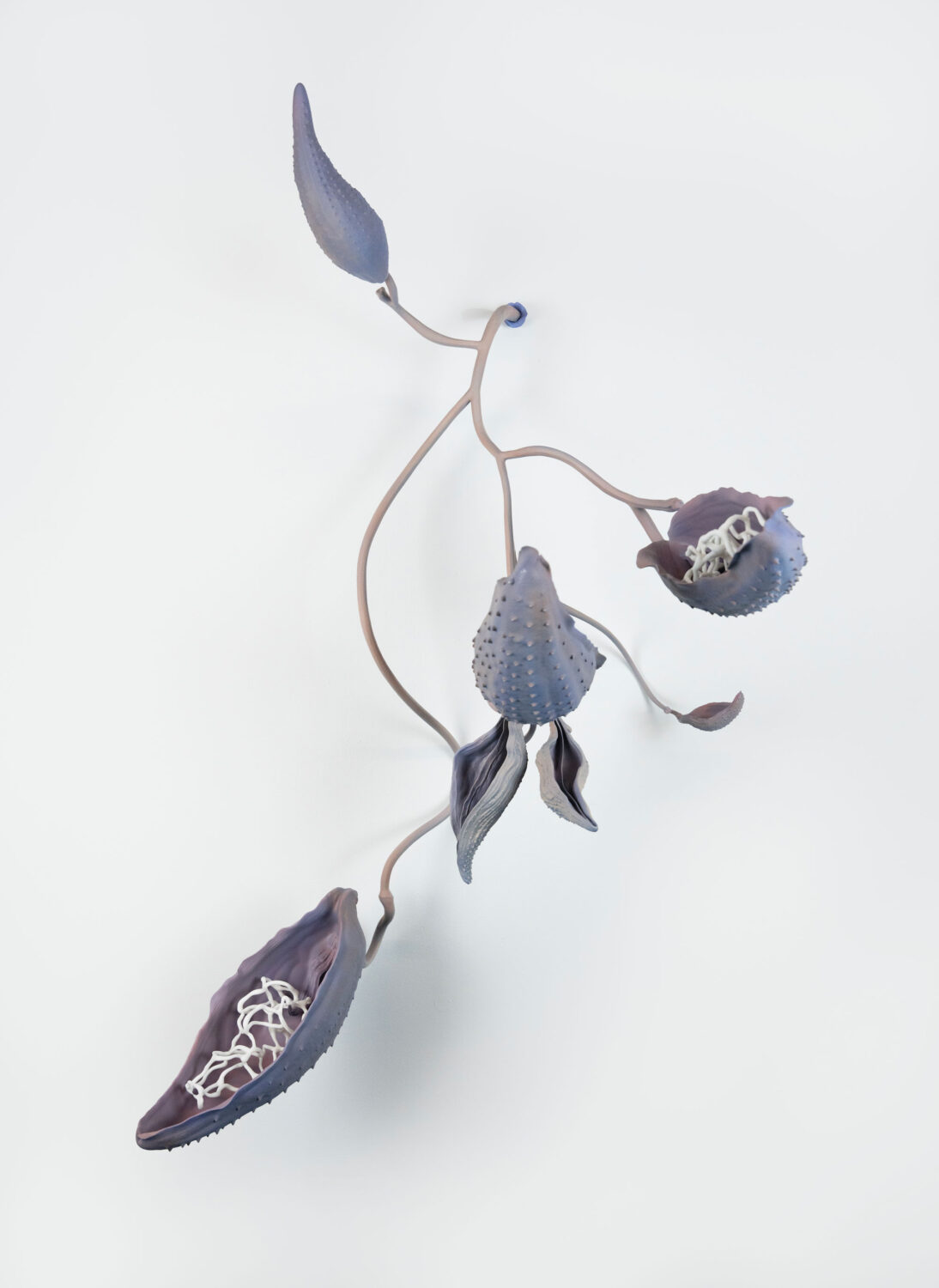
Cao first engaged with Dead Horse Bay during the Covid-19 pandemic, when she had been unable to return home to China for several years. In Of Shape Offshore (2023), the earliest piece in the show, she films miniature landscapes crafted from materials gathered from the bay. These scenes glow as if alive – microscopic worlds that belong neither to land nor sea, but hover between them. Cao was drawn to this betweenness, a notion echoed in the exhibition’s title, Winding without Shore. “This was the beginning of my idea of ‘offshore’ – a sensation of wandering at the edge, at the border, without belonging fully to either side. I hadn’t been home for seven years, and when I made the video, I was carrying that diasporic feeling – a sense of existing in an in-between state.”
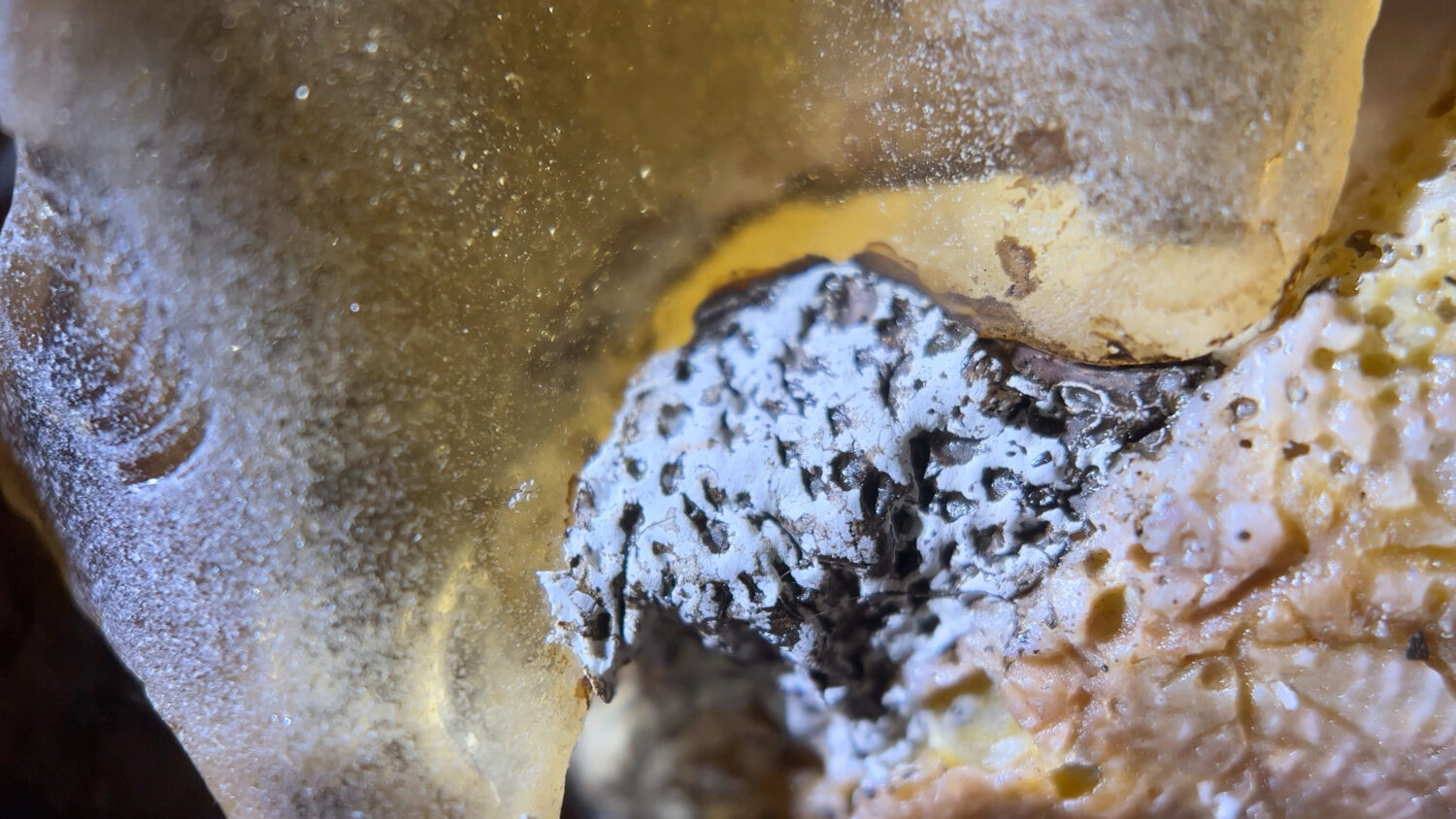
Elsewhere in the show, a pair of sculptures, Xenophora I and II (both 2024), extend Cao’s exploration of transformation across geographies. Created during a residency in Quebec, these intricate, tree-like forms chart an imagined continuum, linking the shores of Brooklyn to the banks of the St. Lawrence River. Composed of idiosyncratic materials – shell fragments, driftwood, beach glass – collected along shorelines in both New York and Quebec, the sculptures stage a quiet dialogue between disparate landscapes. Their method of assemblage evokes the Xenophora genus, marine gastropods that attach stones, coral, and shells to their bodies, carrying the detritus of their environments as part of their form. In Cao’s sculptures, these remnants, gathered from the ever-shifting boundary between land and sea, blossom into speculative fossils, suspended between past and future. Shells are a recurring leitmotif in her practice – they often come from her family in Guangzhou, who save the remains of oyster and mussel meals, awaiting her return home from across the ocean. In Cao’s hands, these fragments are meticulously cleaned, dried, and painted, then woven into forms where branches evolve from driftwood to shards of discarded Evian bottles, transformed into delicate, wing-like structures.
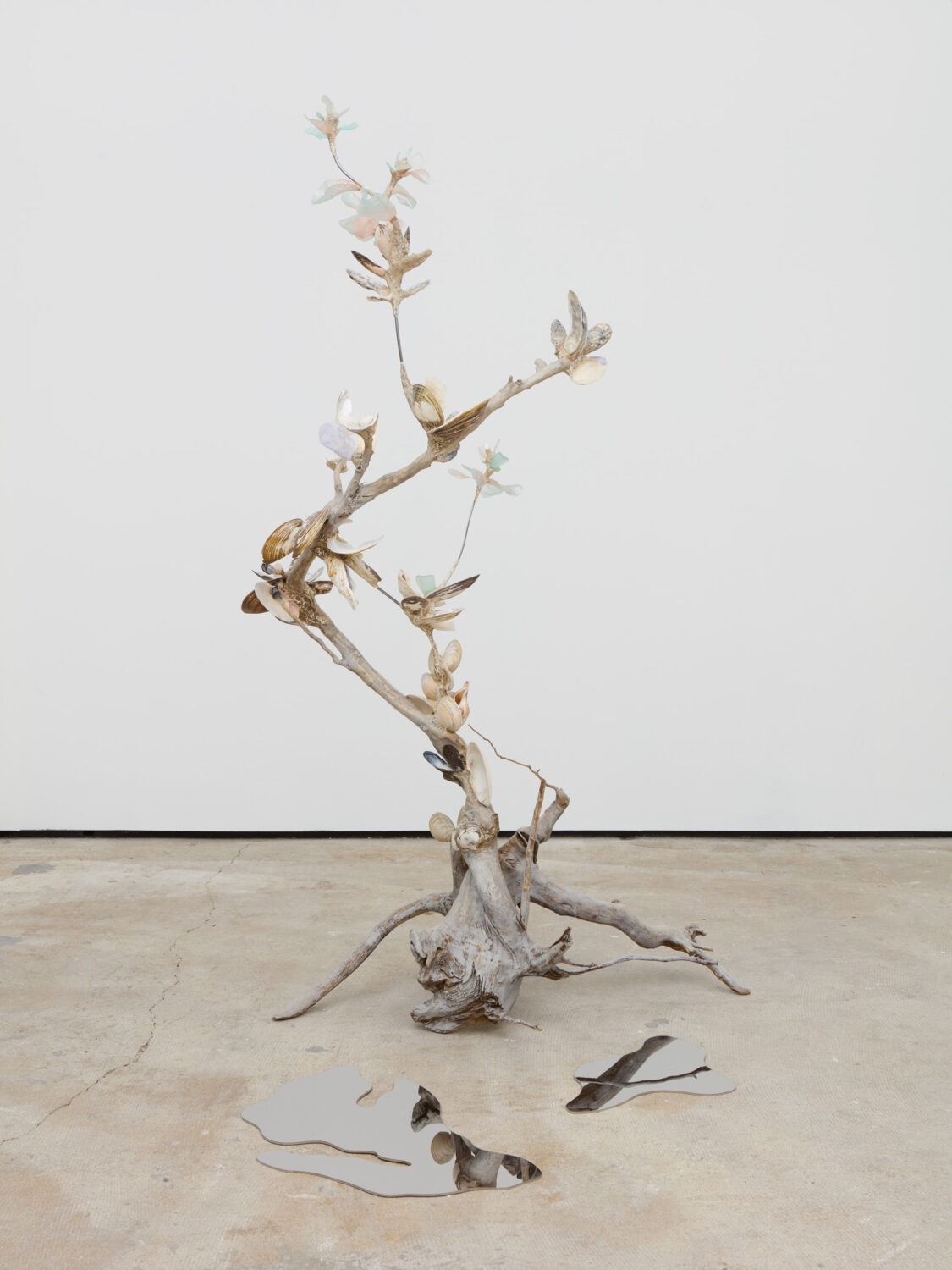
In her eight-minute video work Begin with the End of What Comes Before (2024), Cao reflects on the deep transmutations between biological and geological matter. Using virtual engines, she reconstructed landscapes from footage gathered during a research trip to Weng’an, Guizhou. Merging virtual world-building, microscopic imaging, and AI-generated animation, she conjures future remnants of a transformed Earth: scorched mountains, purple rock formations, and surreal, chemically altered passageways that seem to shift and mutate before our eyes. Here, Cao draws particular inspiration from the mineral formation within microscopic organisms and their residual traces left by extractive mining – processes that, over millennia, have shaped vast, sprawling landscapes. “I like to bring together the microscopic and the monumental – the idea that the most monumental thing on Earth emerge from the tiniest of beings.” she says.
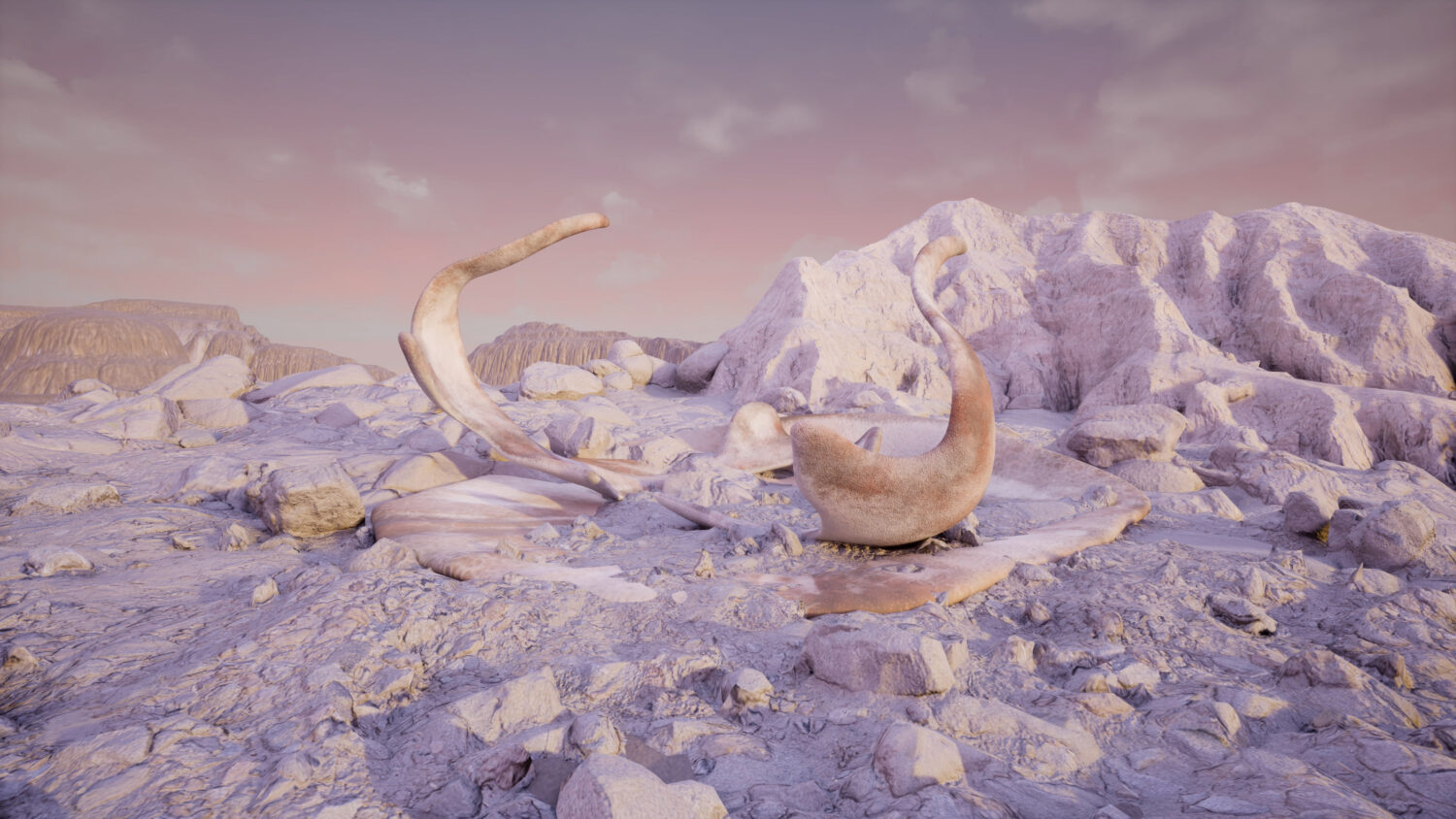
In working with such minute, speculative lifeforms, Cao moves beyond grafting species with fragments collected in her surroundings. “When I engage with something so prehistoric that almost become fictional, I have no reference aside from hypothesis, or imagination,” she explains. Echoing the enigmatic remains of an unknown species glimpsed toward the end of Begin with the End of What Comes Before, the two new sculptures she created for this exhibition, evoke compositions and scales that defy reality, yet reminiscent of evolution we once encountered. One work, Milkweed (2025), is inspired by a seed pod Cao found during a hike – one she thought was dead until it burst open months later, revealing hidden life. Reimagining this quiet drama of unexpected rebirth, Milkweed takes the form of a digitally sculpted and 3D-printed branch, hand-painted in lilac-grey, with delicate, imagined leaves cradling milk-white filaments of borosilicate glass. These leaves split open to unveil a strange, speculative world birthing itself from within – life erupting from what once seemed inert.
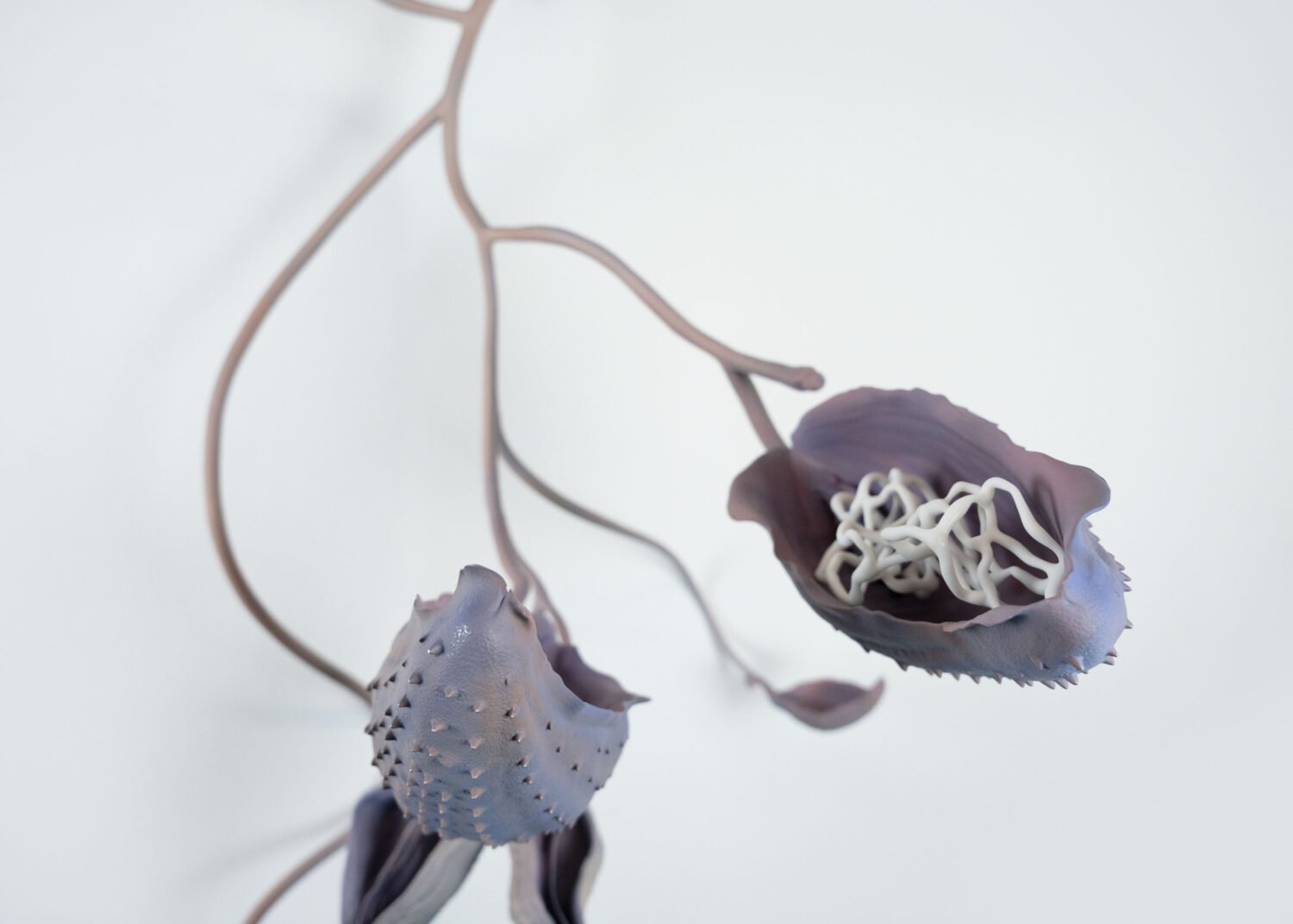
Nothing in the exhibition stands alone; each work feeds into the next. Seeking to weave together her organic and digitally produced pieces, Cao has placed mirrors on the floor to catch and scatter the flickering light from videos and sculptures, binding different phases of her work into a single, shifting reflection. The entire exhibition is submerged in the metaphor of water and the shoreline – fluid, intersecting, and perpetually transforming.
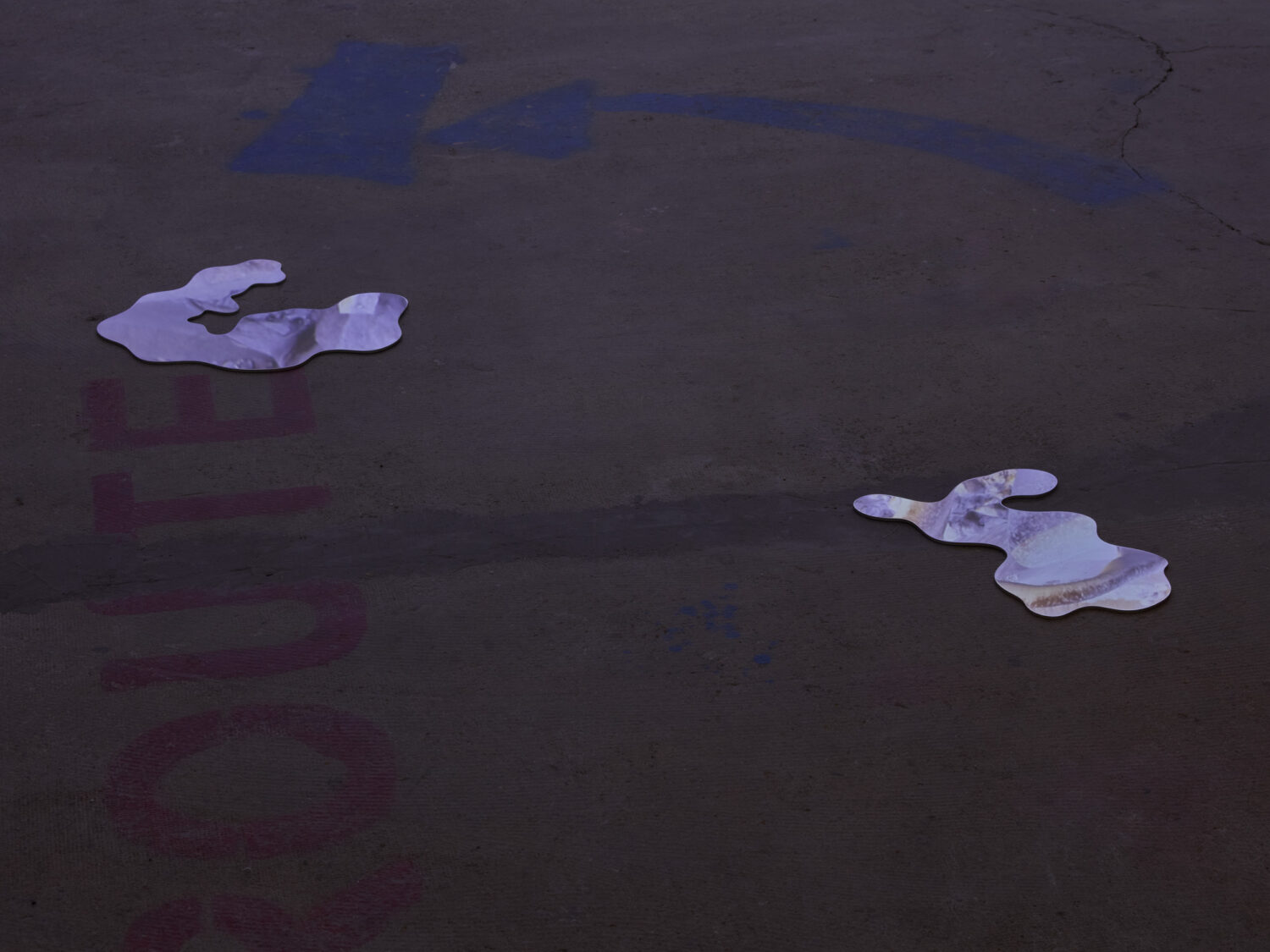
In the end, Cao’s meditation on transformation and change feels profoundly freeing, and quietly hopeful. At a time when the collapse of ecosystems, species, and resources feels inevitable, Cao offers another perspective: that endings are not ruptures, but constants. “There have been many ends of the world already. The end of the world is not something new, nor is it some final event waiting for us – it is always happening,” she says. In her world, life is not anchored in permanence but defined by adaptation. Amid destruction, something new always takes root. In embracing the inevitability of change, she invites us to understand hope not as a fixed ideal, but as a living, breathing process – an endless, resilient act of becoming.
Winding without Shore is on view at Gathering until 7 June 2025.
Feature image: Shuyi Cao, Xenophora II, 2024. Shuyi Cao: Winding without shore, 25 Apr–7 Jun 2025, Gathering, London, UK. Courtesy of Gathering and the artist